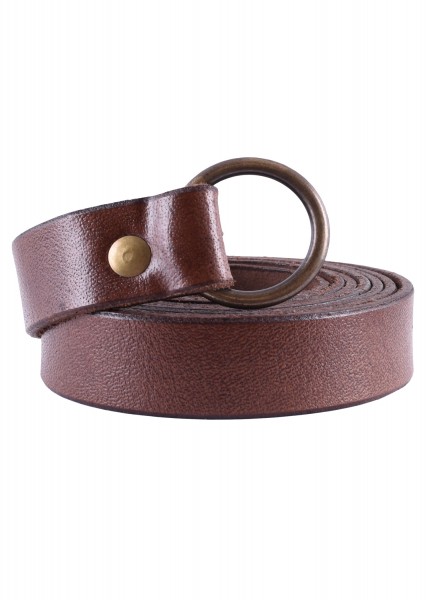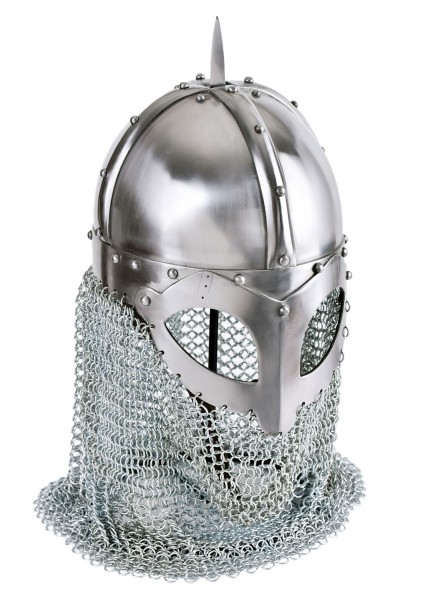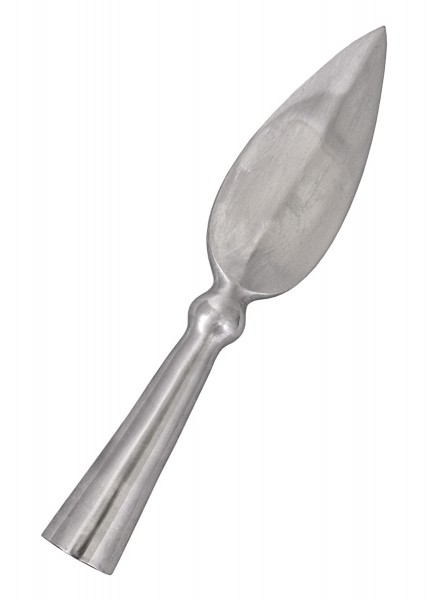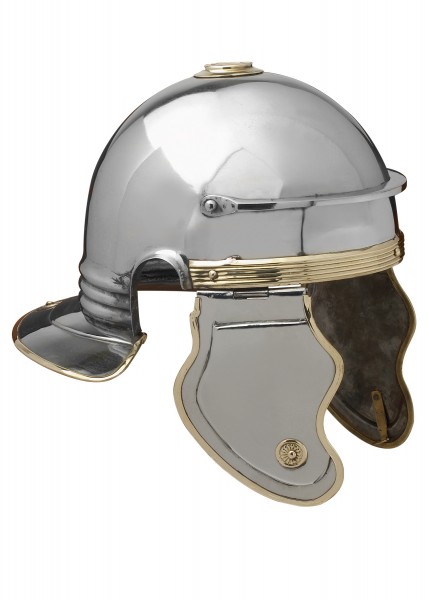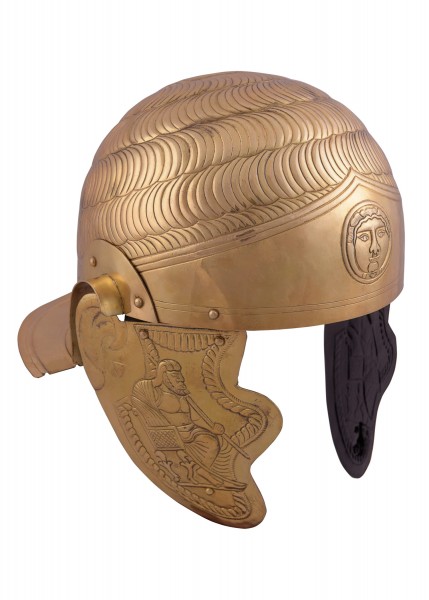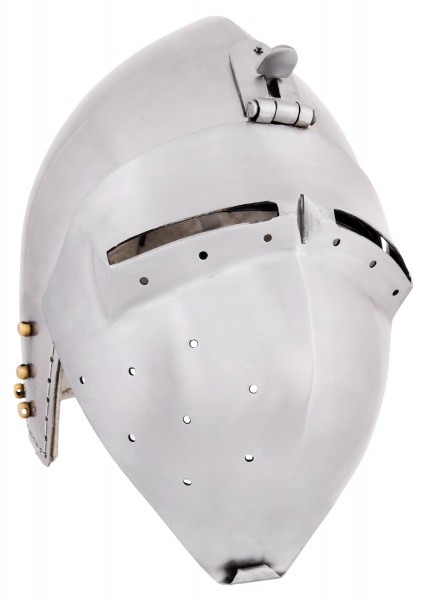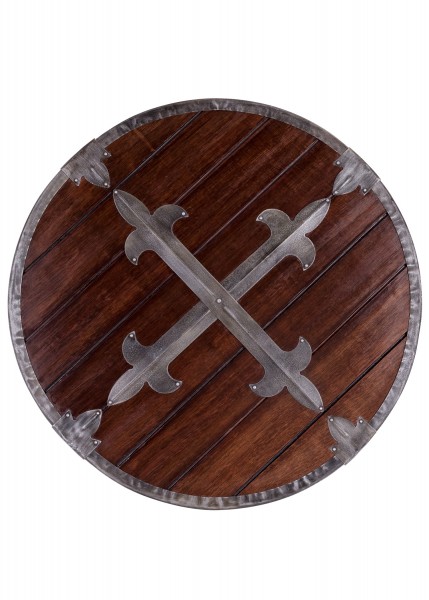€199.99 *
Prices incl. VAT plus shipping costs
Ready to ship, Delivery time approx. 1-3 working days
Boeotian Helmet, Brass, 4th c. BC This Greek military helmet was inspired by a well-preserved...more
Product information "Boeotian Helmet, Greek Helmet, Brass, 4th c. BC"
Boeotian Helmet, Brass, 4th c. BC
This Greek military helmet was inspired by a well-preserved bronze find accidentally recovered from the Tigris River, Iraq, in 1854. The original artefact, dated to the 4th c. BC and believed to have belonged to a cavalryman of Alexander the Great's Macedonian army, is now on display at the Ashmolean Museum in Oxford, England.
The Boeotian helmet takes its name from the Greek region of Boeotia (or Boiotia) where it may possibly have its roots. This open faced helmet, modeled on a wide-brimmed felt hat called the petasos, was beaten into shape from one single sheet of bronze. Typical features were the domed (later conical) crown and the flaring, downward sloping brim with projecting front section and folds at the sides. This particular shape made the helm ideal for mounted troops, as it provided adequate neck, face and lateral protection without impairing the hoplites' vision and hearing. Although mainly used by the Greeks and Macedonians during the Classical Antiquity and the Hellenistic period, evidence shows that this helmet type also saw service among the Roman cavalry in the Republican period.
The Boeotian helmet offered here is a one-piece brass construction (1.2 mm / 18 gauge). The interior is not lined, but delivery includes a padded cotton cap that makes this fine helmet fully wearable for re-enactment, LARP, theater, etc.
Details:
- Material: 1.2 mm brass, 100% cotton cap
- Suitable for head circumference up to approx. 67 cm
- Long distance (back to front): approx. 23 cm
- Short distance (ear to ear): approx. 20 cm
- Height: approx. 30 cm
- Weight (helmet only): approx. 1.6 kg
- Weight with padded cap: approx. 1.7 kg
Specs may slightly vary from piece to piece.
This Greek military helmet was inspired by a well-preserved bronze find accidentally recovered from the Tigris River, Iraq, in 1854. The original artefact, dated to the 4th c. BC and believed to have belonged to a cavalryman of Alexander the Great's Macedonian army, is now on display at the Ashmolean Museum in Oxford, England.
The Boeotian helmet takes its name from the Greek region of Boeotia (or Boiotia) where it may possibly have its roots. This open faced helmet, modeled on a wide-brimmed felt hat called the petasos, was beaten into shape from one single sheet of bronze. Typical features were the domed (later conical) crown and the flaring, downward sloping brim with projecting front section and folds at the sides. This particular shape made the helm ideal for mounted troops, as it provided adequate neck, face and lateral protection without impairing the hoplites' vision and hearing. Although mainly used by the Greeks and Macedonians during the Classical Antiquity and the Hellenistic period, evidence shows that this helmet type also saw service among the Roman cavalry in the Republican period.
The Boeotian helmet offered here is a one-piece brass construction (1.2 mm / 18 gauge). The interior is not lined, but delivery includes a padded cotton cap that makes this fine helmet fully wearable for re-enactment, LARP, theater, etc.
Details:
- Material: 1.2 mm brass, 100% cotton cap
- Suitable for head circumference up to approx. 67 cm
- Long distance (back to front): approx. 23 cm
- Short distance (ear to ear): approx. 20 cm
- Height: approx. 30 cm
- Weight (helmet only): approx. 1.6 kg
- Weight with padded cap: approx. 1.7 kg
Specs may slightly vary from piece to piece.
Links related to "Boeotian Helmet, Greek Helmet, Brass, 4th c. BC"
Cookie settings
This website uses cookies which are necessary for the technical operation of the website and are always set. Other cookies, which increase the comfort when using this website, are used for direct advertising or to facilitate interaction with other websites and social networks, are only set with your consent.
Last viewed














